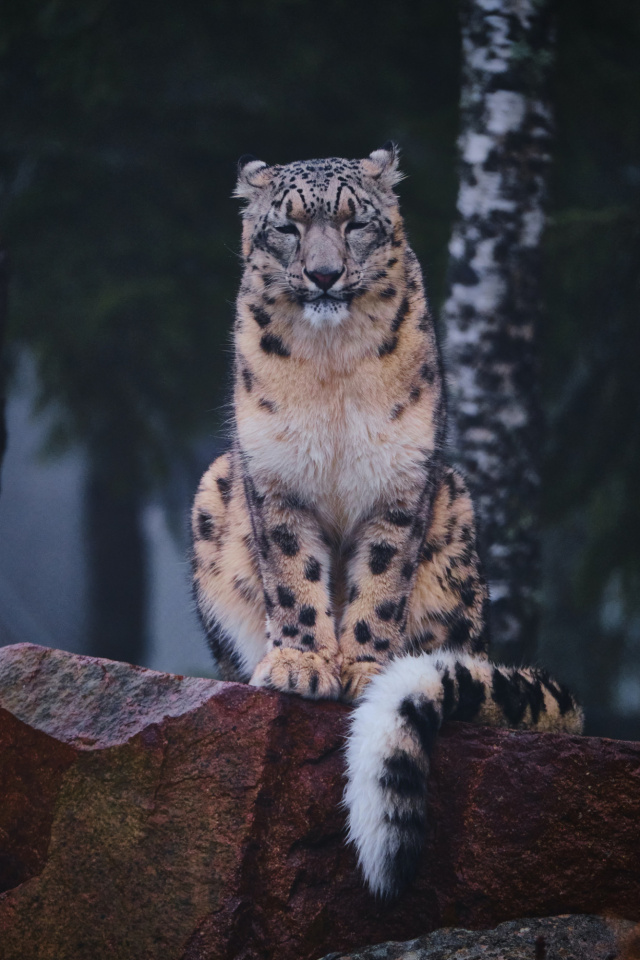Rare encounter with a snow leopard
Chitral & Gilgit-Baltistan
Climate change and ecological disruption have disturbed the snow leopard’s food chain, forcing this elusive species to adapt its lifestyle and explore new territories. In recent years, sightings have been recorded in areas where snow leopards were never observed before, highlighting the extent of habitat shifts. As their traditional prey becomes scarce, they are driven into unfamiliar landscapes, often overlapping with human settlements. This shift increases encounters with livestock, resulting in a rise in human–wildlife conflict and heightened tensions between local communities and the species.
In 2007, while working as Project Manager with the Chitral Association for Mountain Area Tourism, I had the privilege of collaborating with the BBC World Documentary team during their visit to Chitral to film Pakistan’s wildlife. At the time, the region lay under heavy snow. To our astonishment, a snow leopard descended into the valley, preying first on goats and sheep belonging to local farmers before turning its attention to wild goats in the Thoshi Game Reserve.
The BBC team captured this remarkable event, marking the first time I ever saw a snow leopard with my own eyes—an encounter that remains one of the most profound experiences of my life.
This rare footage later appeared in a BBC video narrated by Sir David Attenborough.

The BBC team, equipped with powerful cameras and binoculars, focused on the leopard, though it was easily visible even without equipment. Accompanied by three cubs, the snow leopard remained in the game reserve for seven days. During this period, it first attempted to hunt a markhor but failed when the animal escaped across the river. Soon after, however, it successfully brought down a large markhor and fed on the carcass for an entire week.
This extraordinary event provided the BBC team with ample opportunity to capture some of the rarest and most detailed footage of the predator’s behavior in its natural environment.
Local communities in the region hold the snow leopard in deep reverence, a respect rooted in their historical relationship with nature and wildlife. Generations of cultural folklore have surrounded this mysterious predator. One well-known tale warns that anyone who kills a snow leopard will suffer a painful death from stomach illness, as the animal is believed to be under the protection of nature’s guardian spirit. Because of such beliefs, harming a snow leopard is not only dangerous but also considered socially unacceptable and something deeply taboo.

Shams Uddin
Climate change and ecological disruption have disturbed the snow leopard’s food chain, forcing this elusive species to adapt its lifestyle and explore new territories. In recent years, sightings have been recorded in areas where snow leopards were never observed before, highlighting the extent of habitat shifts. As their traditional prey becomes scarce, they are driven into unfamiliar landscapes, often overlapping with human settlements. This shift increases encounters with livestock, resulting in a rise in human–wildlife conflict and heightened tensions between local communities and the species.
In 2007, while working as Project Manager with the Chitral Association for Mountain Area Tourism, I had the privilege of collaborating with the BBC World Documentary team during their visit to Chitral to film Pakistan’s wildlife. At the time, the region lay under heavy snow. To our astonishment, a snow leopard descended into the valley, preying first on goats and sheep belonging to local farmers before turning its attention to wild goats in the Thoshi Game Reserve.
The BBC team captured this remarkable event, marking the first time I ever saw a snow leopard with my own eyes—an encounter that remains one of the most profound experiences of my life.
This rare footage later appeared in a BBC video narrated by Sir David Attenborough.

The BBC team, equipped with powerful cameras and binoculars, focused on the leopard, though it was easily visible even without equipment. Accompanied by three cubs, the snow leopard remained in the game reserve for seven days. During this period, it first attempted to hunt a markhor but failed when the animal escaped across the river. Soon after, however, it successfully brought down a large markhor and fed on the carcass for an entire week.
This extraordinary event provided the BBC team with ample opportunity to capture some of the rarest and most detailed footage of the predator’s behavior in its natural environment.
Local communities in the region hold the snow leopard in deep reverence, a respect rooted in their historical relationship with nature and wildlife. Generations of cultural folklore have surrounded this mysterious predator. One well-known tale warns that anyone who kills a snow leopard will suffer a painful death from stomach illness, as the animal is believed to be under the protection of nature’s guardian spirit. Because of such beliefs, harming a snow leopard is not only dangerous but also considered socially unacceptable and something deeply taboo.
You might like...

Snow Leopard hunts Markhor

The future of Snow Leopards

Chitral in Winter

Markhors - Cliffwalkers of Chitral
Newsletter
Sign up to keep in touch with articles, updates, events or news from Kuno, your platform for nature
